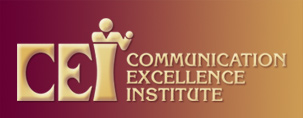Think of how many times you’ve sat through what seemed like the world’s most boring presentation. Guaranteed, it was almost always delivered with low energy. It was probably a technical or financial presentation. Wasn’t the content tedious enough without the drudgery of a monotonous speaker who seemed totally uninterested in the topic?
What did you find yourself saying? Was it something like “this guy doesn’t give a darn about his topic or the audience!”
It’s amazing how many professionals deliver presentations just like that. The truth is they do like their subject and they do want to connect with their listeners. The problem is that they lack what we call performative energy. They’re really not aware that, like a professional actor, they are performing. Their presentations at best sound more like conversations than performances. Their volume is low, as would be in a conversation or around a conference table.
The costs of low energy
Besides boring an audience, low-energy presenters run a terrible risk: they unintentionally give the impression of not being committed to their topic. Roger Ailes, the communication coach to several Presidents, says in his book You Are The Message, “Audiences will forgive you for almost anything. What they won’t forgive you for is lack of commitment.” This is why we make such a big case for energy. In an audience member’s mind, energy equals commitment. High energy, high commitment; low energy, low commitment. Commitment to the audience and commitment to one’s subject.
The other risk low-energy speakers run is to potentially lose their persuasiveness with their listeners. And if these hapless speakers are in a leadership position, their low-energy delivery could actually reduce their overall credibility as leaders! Leaders, by definition, are enthusiastic, dedicated, high-energy people. They may express their energy in very different ways, but they all are seen as highly credible.
What do actors do?
So since we’ve agreed that we’re performing whenever we present, let’s take a look at some things professional actors do to engage their audiences and to project energy and commitment in their performances.
Actors often have to play a part numerous times. A major challenge is to keep the performance fresh every time. They accomplish this in several ways.
1. They make the most of nonverbal communication.
Great actors know all kinds of ways to convey human emotion to their audiences through both large and subtle bodily movements, facial expressions, and vocal power. Their bodies are their instruments. To sharpen an actor’s use of nonverbal communication, directors will often have the actors rehearse a scene without words. When an actor has to communicate emotions and even plot twists with nothing more than gestures and facial expressions, the actor learns how to build nuance into body cues. Actors’ skills in nonverbal expression add a second layer of high energy to any performance. Similarly, business presenters can definitely profit from more overt energy in facial affect and illustrative gestures to convey meaning nonverbally.
2. They stay in the moment.
Actors must never let their focus become diffused or “flag” during a scene. To keep the performance fresh, actors focus on every line, every moment of the script, as though it were the first time they heard—or uttered—those words. Executives are no different from professional actors in their need to stay “in the moment.” Often a young aspiring manager is advised to “track” staff meeting discussions more carefully, to keep a sharp eye on the ball as it bounces from one participant to another, so that others can see that the manager is energetically connected to every aspect of the decision-making as it occurs. Needless to say, a manager cannot stay “in the moment” of any meeting if he or she has brought other work to do while the discussion occurs, or if the seductive force of a Blackberry gets the manager’s attention, even for a moment.
3. They’re always “on.”
One of the hardest things young professionals need to understand is that a person in any aspect of leadership is always “on.” Like an actor whose energy soars as the curtain goes up, business leaders are constant role models for others. We don’t want to make anyone paranoid, but people are indeed always watching you. This requires vigilance, a respect for walking the talk (not just talking it), and energy!
How energy is revealed
People show personal energy in different ways. We all think of the office jokester or cheerleader as having lots of energy (sometimes over-the-top), but high energy comes in many other forms, as well. There’s the intense energy in the eyes of the research scientist who is on the verge of a breakthrough solution to a complex problem, the gentle caring energy of a kind physician with great bedside manner, the motivational energy of the manager who inspires her team to reach for even higher goals, and the excited energy of the keynote speaker who strides to the lectern. Make sure that, when someone looks into your eyes, they see that “someone’s home.” Other people can actually tell whether your wheels are turning or whether you’ve checked out. Never let ‘em see you “checked out.”
Emerson wrote, “Nothing great was ever accomplished without enthusiasm.” He might easily have substituted the word “energy” for “enthusiasm.”
Make Emerson proud. Break a leg! Fill your next talk with “performative energy!”
Yours in good energetic communication,
Jan & Neal Palmer
P.S. In our PSSP issue “RSVP: How to Turn a Boring Speaker into an Interesting One in Ten Minutes or Less!,” we elaborated on a simple formula for taking any speaker to the next level of performative energy. You can find this article by clicking this link:
http://www.talk2cei.com/ezine/archive/vol1_num4_workplace.htm |



